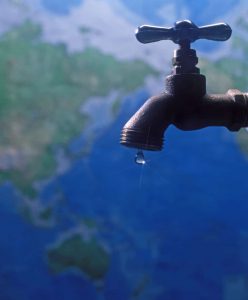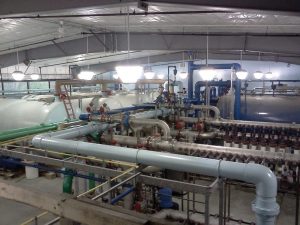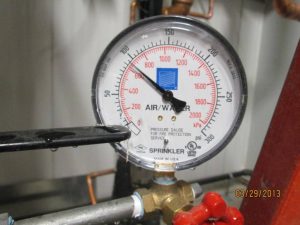In today’s modern world, it’s fair to say that water utilities operate as the guardians of public health, constantly staying vigilant against threats to water quality, safety, and accessibility.
While their efforts may often go unnoticed by the general public, behind the scenes, water utilities are continuously improving their systems and operations to enhance safety and health standards for the public. From infrastructure upgrades and quality testing to innovative solutions and emergency preparedness, all are instrumental in enhancing the overall well-being of our community.
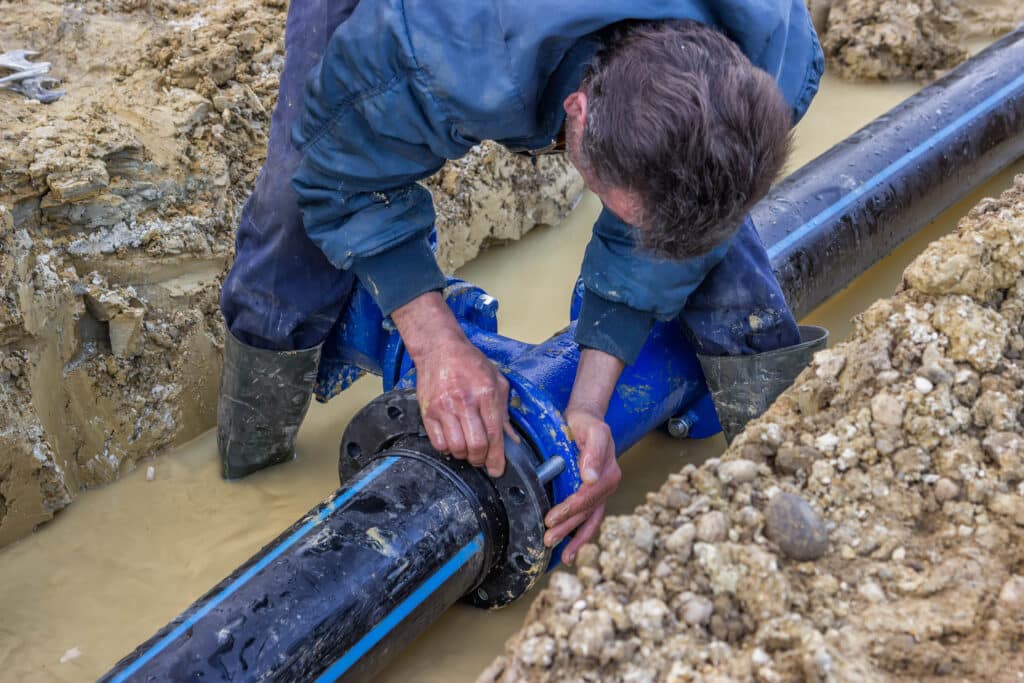
Infrastructure Upgrades
Water utilities’ relentless pursuit of minimizing leaks, contamination risks, and disruptions in water supply are at the forefront of modernization, specifically when it comes to the upgrading of pipelines, treatment plants, and distribution system components. With these crucial infrastructure updates, often a product of the combined efforts of water audits and utility management, utilities are able to decrease the need for new sources, treatment plants, facility upgrades, and expansions and reduce the number of entry points for disease-causing pathogens.
Through these passion-fueled, robust efforts, these upgrades become the backbone of a resilient and reliable water infrastructure, further increasing the safety and accessibility of public water.

Quality Testing and Monitoring
Ensuring the safety of water begins with a commitment to quality testing and monitoring. Water utilities that conduct meticulous lead inventories and testing procedures are able to swiftly identify potential risks, because as we know, lead is not our friend. By vigilantly tracking water quality, utilities safeguard communities from the harmful effects of these contaminants. They also maintain a constant awareness of the condition of our public infrastructure, gaining insights into both successes and areas that require improvement.
According to the World Health Organization, one million people die every year due to lead poisoning. Whether it’s from industrial settings, like mining and smelting, or paint and plumbing in older homes, lead poisoning maintains its spot as a high risk that can be mitigated by routine replacement of lead service lines.
Innovative Solutions
The relentless pursuit of improvement and modernization embraced by Tata & Howard helps water utilities further pave the way towards embracing more cutting-edge technologies and innovative solutions. In addition, Tata & Howard is a 100% Employee Stock Owned Plan (ESOP) company, meaning that the collaborative nature of the client-ESOP firm relationship allows for both parties to explore and embrace more unconventional, innovative solutions: solutions such as advanced filtration systems and real-time monitoring, both of which can also be catered to our customers’ specific and individual needs.
Emergency Preparedness
As “guardians of public health,” water utilities also serve as sentinels, always prepared for the unexpected. The level of preparedness in their Emergency Response Plans (ERPs) allows for a swift and coordinated response to natural disasters, industrial accidents, or disruptions in the water supply.
In fact, all public water suppliers are required to have ERPs in place. Public water systems in Massachusetts are also obligated to conduct a minimum of 10 hours of Emergency Response training each year for their employees which plays a crucial role in enabling water system managers and staff to identify vulnerabilities, implement improvements, and establish effective procedures to be followed in case of an emergency.
The (mandated) preparation, continuous updating, and execution of a response plan are essential for strengthening system security, reducing property damage, minimizing liability, preventing illnesses, and saving lives.

Conclusion
As water utilities continue to evolve and collaborate on the continuous efforts of upgrading infrastructure, embracing innovation, and prioritizing emergency preparedness, the more secure they — and we as a community — are in the vital role they play in ensuring the availability and accessibility of clean and safe water.
Amidst the challenges we face as we navigate the modern world, let us not forget to acknowledge the relentless dedication of these guardians – the water utilities that quietly, yet profoundly, secure the health and safety of the communities they serve.

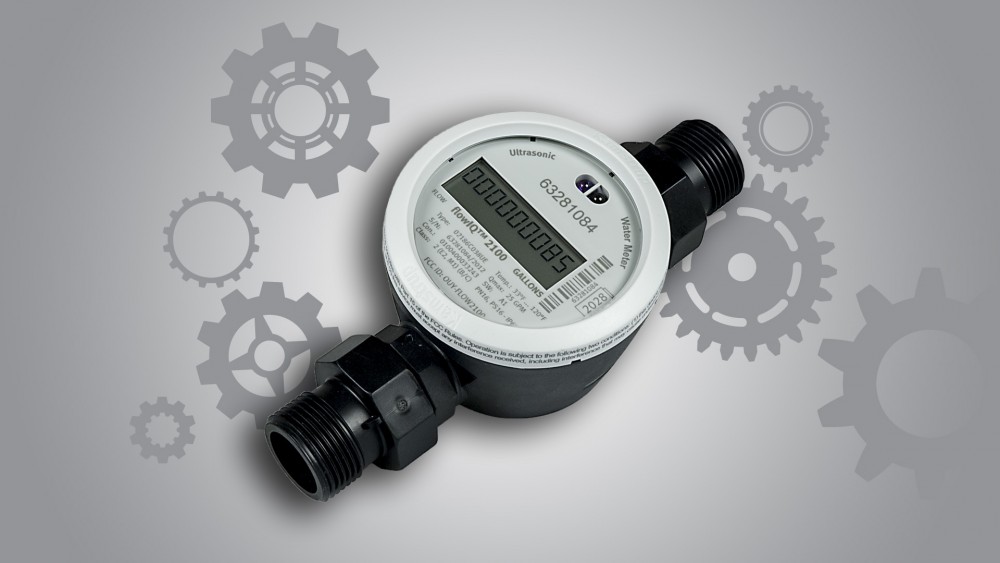 AMR and AMI: What’s the Difference?
AMR and AMI: What’s the Difference?
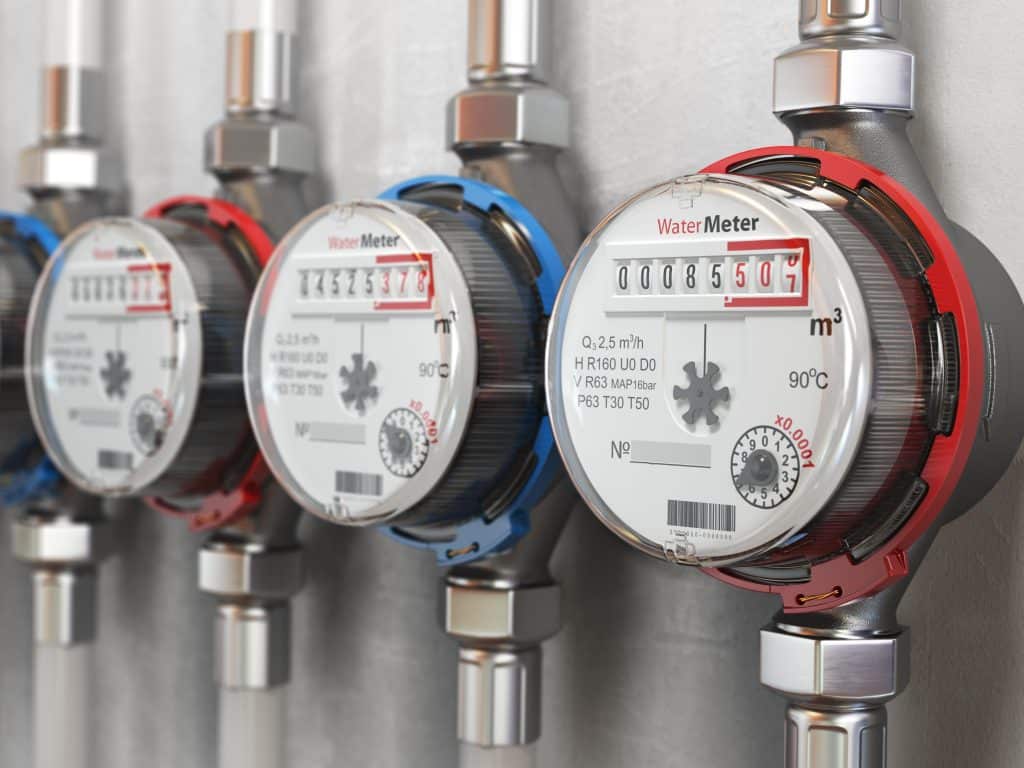
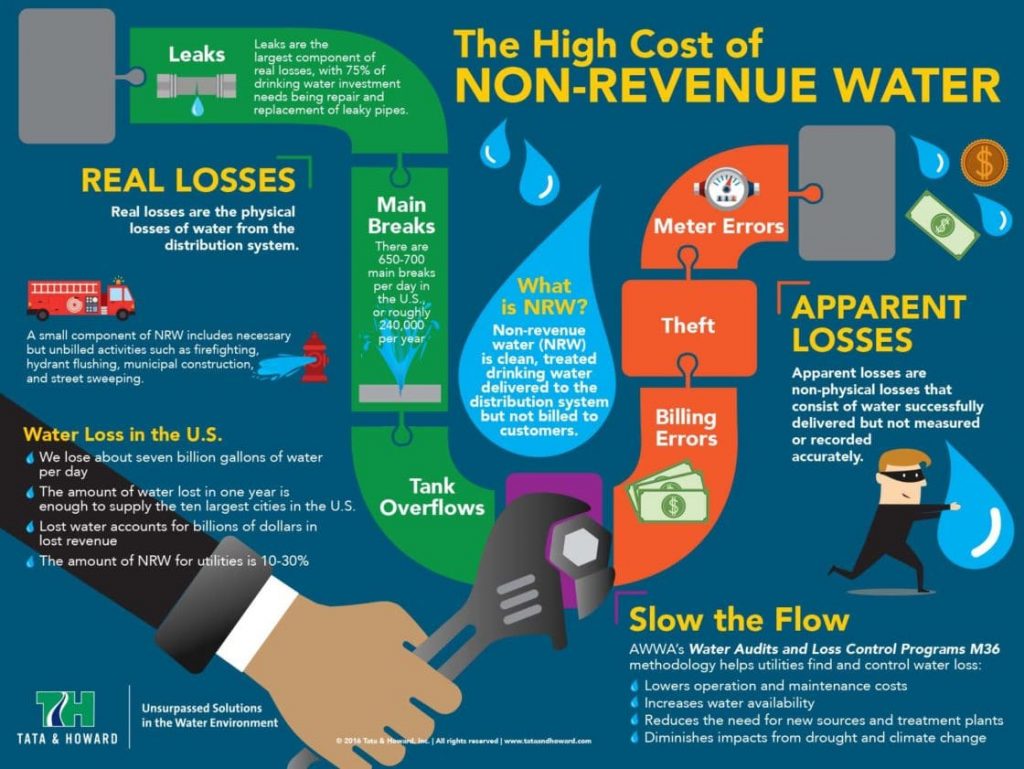

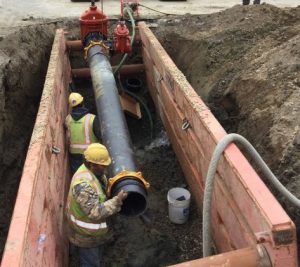 Financing for The Clean Water SRF Program helps municipalities with federal and state compliance water-quality requirements, focusing on stormwater and watershed management priorities, and green infrastructure. The Drinking Water SRF Program, provides low-interest loans to communities to improve their drinking water safety and water supply infrastructure.
Financing for The Clean Water SRF Program helps municipalities with federal and state compliance water-quality requirements, focusing on stormwater and watershed management priorities, and green infrastructure. The Drinking Water SRF Program, provides low-interest loans to communities to improve their drinking water safety and water supply infrastructure.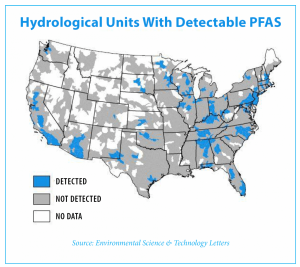 According the Environmental Protection Agency (EPA), all these UCMR 3 PFAS compounds have been detected in public water supplies across the US. Since PFAS are considered emerging contaminants, there are currently no established regulatory limits for levels in drinking water. However, in 2016, the EPA set Health Advisory levels (HA) of 0.07 micrograms per liter (µg/L) or 70 parts per trillion (ppt) for the combined concentrations of two PFAS compounds, PFOS and PFOA.
According the Environmental Protection Agency (EPA), all these UCMR 3 PFAS compounds have been detected in public water supplies across the US. Since PFAS are considered emerging contaminants, there are currently no established regulatory limits for levels in drinking water. However, in 2016, the EPA set Health Advisory levels (HA) of 0.07 micrograms per liter (µg/L) or 70 parts per trillion (ppt) for the combined concentrations of two PFAS compounds, PFOS and PFOA. The EPA also recommends that treatment be implemented for all five PFAS when one or more of these compounds are present.
The EPA also recommends that treatment be implemented for all five PFAS when one or more of these compounds are present. Most research on the effects of PFAS on human health is based on animal studies. And, although there is no conclusive evidence that PFAS cause cancer, animal studies have shown there are possible links. However, PFAS ill-health effects are associated with changes in thyroid, kidney and liver function, as well as affects to the immune system. These chemicals have also caused fetal development effects during pregnancy and low birth weights.
Most research on the effects of PFAS on human health is based on animal studies. And, although there is no conclusive evidence that PFAS cause cancer, animal studies have shown there are possible links. However, PFAS ill-health effects are associated with changes in thyroid, kidney and liver function, as well as affects to the immune system. These chemicals have also caused fetal development effects during pregnancy and low birth weights. Municipal water treatment and distribution requires an exorbitant amount of resources, wreaking havoc on the environment and on budgets. And it’s getting worse. Over the past several years, operating costs have consistently been on the rise, while municipal budgets continue to shrink. In addition, regulatory requirements are increasing, forcing municipalities to upgrade treatment processes ahead of schedule. These changes result in limited unsustainable systems and utilities scrambling to find ways to manage their insufficient operational budgets while maintaining levels of service. The good news is that low-cost initiatives exist that can provide quick and significant cost and environmental savings and increase system sustainability.
Municipal water treatment and distribution requires an exorbitant amount of resources, wreaking havoc on the environment and on budgets. And it’s getting worse. Over the past several years, operating costs have consistently been on the rise, while municipal budgets continue to shrink. In addition, regulatory requirements are increasing, forcing municipalities to upgrade treatment processes ahead of schedule. These changes result in limited unsustainable systems and utilities scrambling to find ways to manage their insufficient operational budgets while maintaining levels of service. The good news is that low-cost initiatives exist that can provide quick and significant cost and environmental savings and increase system sustainability.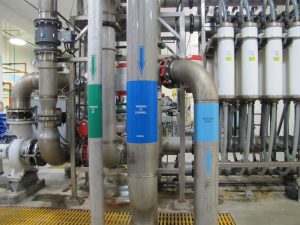

 Efficiency and sustainability are no longer considered luxuries for water systems. Rather, incorporating green initiatives into infrastructure design and operational standards has become crucial to the future sustainability of water systems. And while utilities today value cost-effectiveness over environmentalism due to the criticality of their budgets, there will likely be a shift in thinking as these systems ease the burden of their unsustainable operational costs through effective practices such as efficiency and water loss reduction.
Efficiency and sustainability are no longer considered luxuries for water systems. Rather, incorporating green initiatives into infrastructure design and operational standards has become crucial to the future sustainability of water systems. And while utilities today value cost-effectiveness over environmentalism due to the criticality of their budgets, there will likely be a shift in thinking as these systems ease the burden of their unsustainable operational costs through effective practices such as efficiency and water loss reduction. Each municipality and utility is responsible for making sure that its assets, including water, wastewater, and/or stormwater systems, stay in good working order, regardless of the age of its components or the availability of additional funds. This requirement makes properly maintaining and monitoring assets paramount. With limited resources, an asset management plan can help municipalities and utilities maximize the value of their capital as well as their operations and maintenance dollars. Asset management is a scalable approach that can be utilized by all types of systems, of any size.
Each municipality and utility is responsible for making sure that its assets, including water, wastewater, and/or stormwater systems, stay in good working order, regardless of the age of its components or the availability of additional funds. This requirement makes properly maintaining and monitoring assets paramount. With limited resources, an asset management plan can help municipalities and utilities maximize the value of their capital as well as their operations and maintenance dollars. Asset management is a scalable approach that can be utilized by all types of systems, of any size.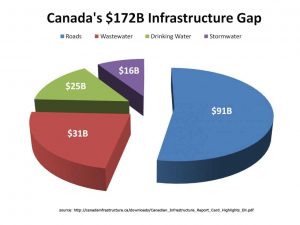 The
The 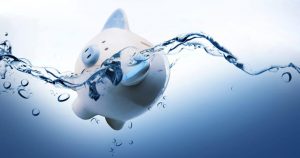 It is apparent that financial planning for municipalities and utilities must be based on sound asset condition projections from an engineering and operations perspective – not just financial assumptions. Customers are often adamantly against rate and tax increases; however, these sometimes-unavoidable increases are easier for customers to understand — and accept — when they are backed up with clear data showing exactly what system improvements are needed and why. There are many costs associated with municipality and utility operations and maintenance. One of these is the cost of asset ownership, a cost element not currently present in the audited financial statements of many municipalities and utilities. An asset management approach can aid municipalities and utilities in understanding the true costs associated with ownership and operation along with complying with government regulations.
It is apparent that financial planning for municipalities and utilities must be based on sound asset condition projections from an engineering and operations perspective – not just financial assumptions. Customers are often adamantly against rate and tax increases; however, these sometimes-unavoidable increases are easier for customers to understand — and accept — when they are backed up with clear data showing exactly what system improvements are needed and why. There are many costs associated with municipality and utility operations and maintenance. One of these is the cost of asset ownership, a cost element not currently present in the audited financial statements of many municipalities and utilities. An asset management approach can aid municipalities and utilities in understanding the true costs associated with ownership and operation along with complying with government regulations.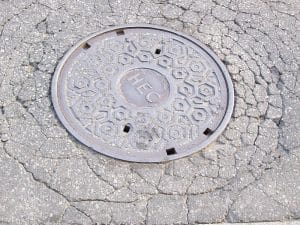 Finding and detecting failures such as leaks in the system
Finding and detecting failures such as leaks in the system
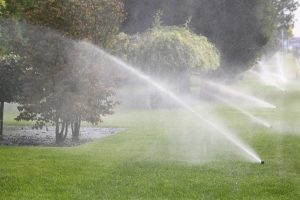 The summer months often go hand in hand with increased water demand and decreased supply. An influx of tourists combined with summer drought and increased outdoor water usage often leaves water systems feeling the pinch. Traditionally, water conservation has been limited to water use restrictions. However, increasing water efficiency is another way to address limited water supplies, with the added boon of providing economic and environmental benefit.
The summer months often go hand in hand with increased water demand and decreased supply. An influx of tourists combined with summer drought and increased outdoor water usage often leaves water systems feeling the pinch. Traditionally, water conservation has been limited to water use restrictions. However, increasing water efficiency is another way to address limited water supplies, with the added boon of providing economic and environmental benefit.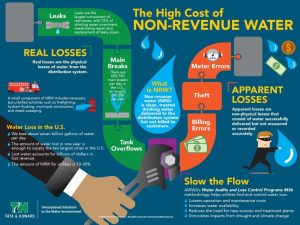

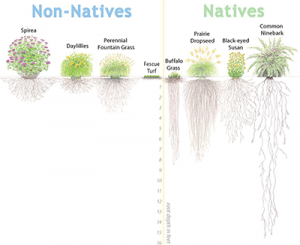
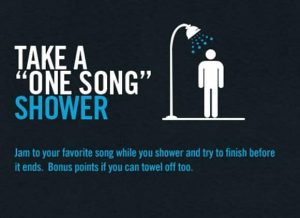 Install water efficient toilets that use only 1.6 gallons per flush, and regularly check toilets for leaks. Leaky toilets are most often fixable by simply installing a new flapper. Try taking shorter showers and install water efficient showerheads. Only run the laundry or dishwasher when completely full, and consider replacing older models with newer, more water efficient ones. Repair leaking faucets and install water efficient faucet aerators to reduce water usage, and wash fruits and vegetables in a pan of water rather than running the faucet. Bonus: use the spent wash water to water house plants.
Install water efficient toilets that use only 1.6 gallons per flush, and regularly check toilets for leaks. Leaky toilets are most often fixable by simply installing a new flapper. Try taking shorter showers and install water efficient showerheads. Only run the laundry or dishwasher when completely full, and consider replacing older models with newer, more water efficient ones. Repair leaking faucets and install water efficient faucet aerators to reduce water usage, and wash fruits and vegetables in a pan of water rather than running the faucet. Bonus: use the spent wash water to water house plants. Summertime is a time for family and fun, and water restrictions shouldn’t put a damper on summer activities. Conscientious residential water usage combined with consistent, well-implemented municipal water audits results in a more cost-effective and environmentally friendly water system. Water conservation and efficiency benefits both consumers and municipalities, and provides a more sustainable water system for future generations.
Summertime is a time for family and fun, and water restrictions shouldn’t put a damper on summer activities. Conscientious residential water usage combined with consistent, well-implemented municipal water audits results in a more cost-effective and environmentally friendly water system. Water conservation and efficiency benefits both consumers and municipalities, and provides a more sustainable water system for future generations.